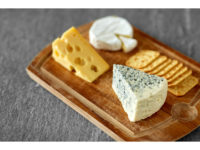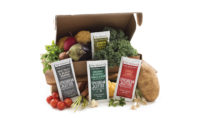
New York-based Forbes identified generics as one of the fastest-growing and most-popular items for sale at stores today. More and more product testing services are identifying PB as equivalent as and sometimes better than national brands. According to Chicago-based Nielsen, households with incomes greater than $100,000 are the fastest-growing segment for PB. Just about every channel has a PB offering these days, including 7-11 and brand owners like Procter & Gamble (Bounty Basic).
Typically, store brands are about one-third less expensive than national brands, so the retailers make considerably more money selling their own brands. Online retailer Amazon is now in the space with AmazonBasics, a line of consumer electronics. So if you are somewhere in the value chain, you need to think about how you can participate in this important area.
Private brands are growing at nearly double the pace of national brands (1.7% versus 1%, according to Nielsen) and they represented $88.5 billion in sales in 2010. And guess what? Packaging is a big part of their success and will play an even more important role in the future.
I believe the old black-and-white generic packaging was a key part of the failure of generics many years ago. After all, the entire package represents the product from a quality, brand and image perspective. Looking at PB now, you see new package formats, including stand-up pouches with zippers, shrink labels on bottles and high-end canisters for dry products. Now that packaging is adding to the overall product value equation through enhanced graphics and improved features and benefits (for example, enhanced freshness, convenience or microwaveability), there will be additional growth opportunities across product categories and retail channels.
While there are spots where dairy packaging has made some advances like Chokablok (the new brand from UK retailer Tesco), dairy packaging has been playing in the low-to-middle PB tier. But, there is real opportunity for brand owners and suppliers to step up their game. We have heard from credible sources that PB growth in the United States could double in the next 10 years. The good news for dairy is that dairy foods represent high-quality ingredients, safety, quality, health and better-for-you. There is a real opportunity to let the packaging help you communicate this to your customers and consumers.
Packaging is a key enabler for brand growth. There are significant opportunities out there to enhance graphics, improve freshness, portability, convenience, usage, closability and more. This is a good time for dairy to step up to the challenge and really look at what packaging can do to help grow the top and bottom line. See the checklist to help you get started. n
Mike Richmond is the president and ceo of Packaging & Technology Integrated Solutions, Shelbyville, Mich. Reach him at mike@ptisglobal.com.
Private Brand Packaging Checklist
• Graphics should support brand image and essence.
• The packaging’s features/benefits are equal to or better than the national brand.
• Packaging is on-trend for consumers and customers, as evidenced by convenience, freshness, portability and retail readiness.
• The packaging meets universal design considerations for ease of opening, usage, readability and other points.
• The cost-to-value parameters have been developed and are understood internally.
• The environment/sustainable packaging story and end-of-life scenarios have been developed in terms of recyclable materials, design for disassembly, use of renewable materials and adherence to FTC Green Guides.


